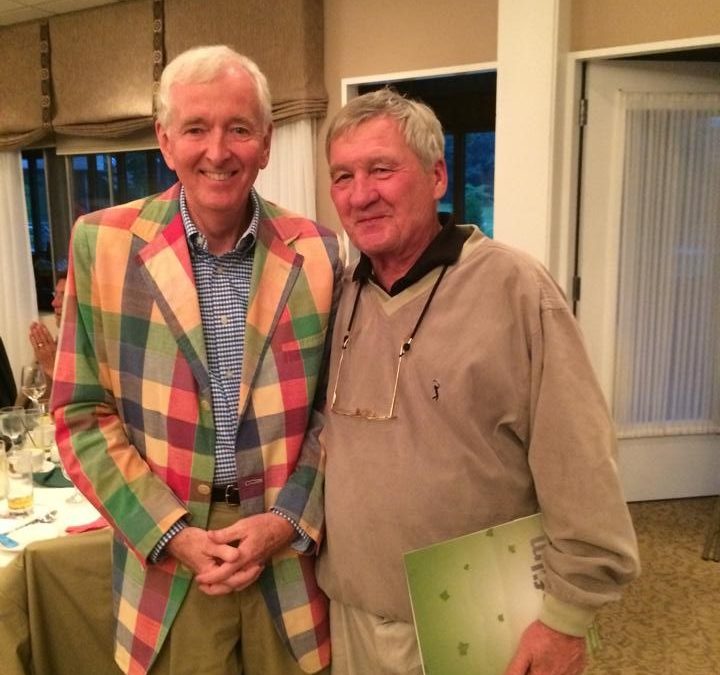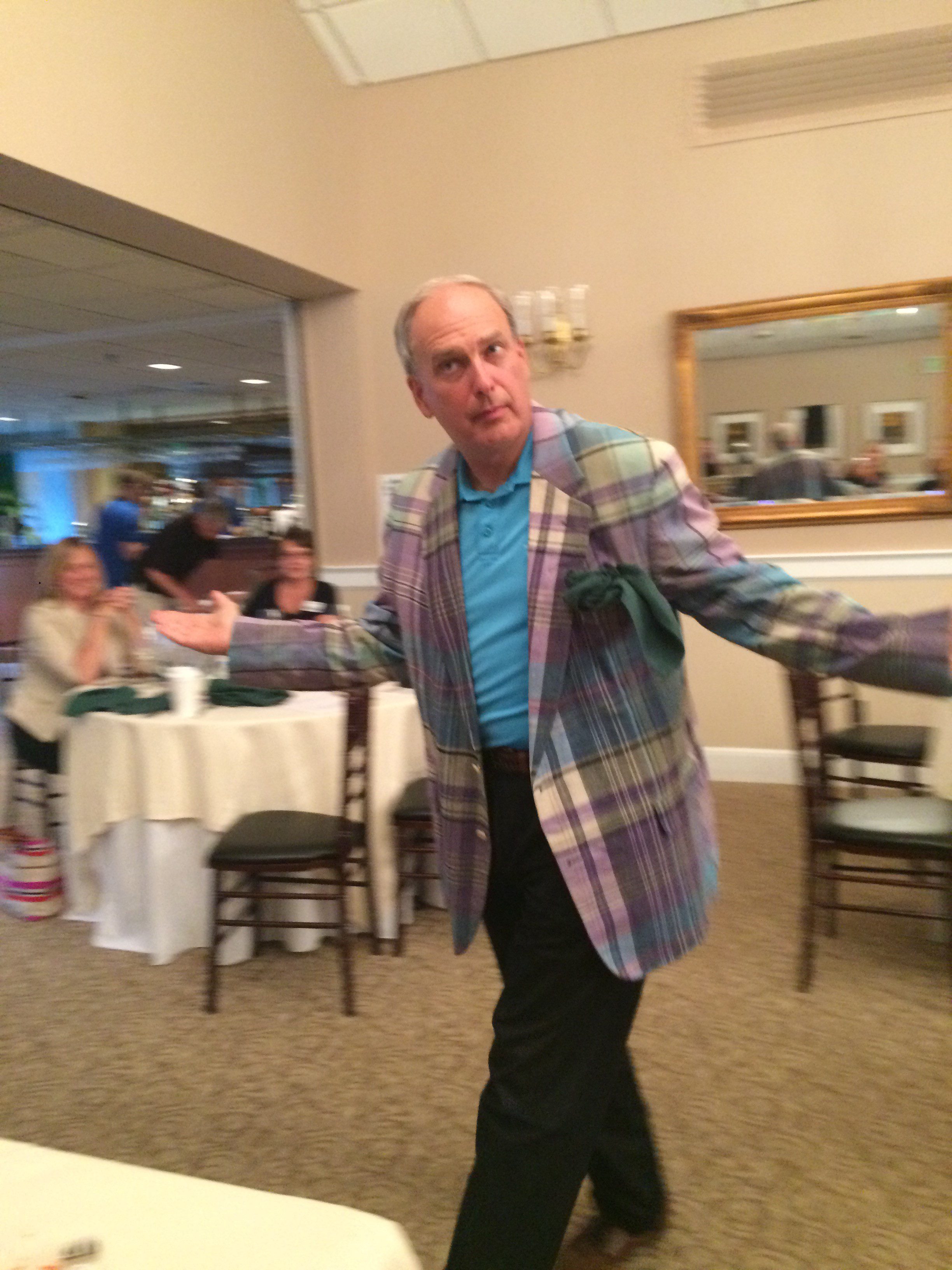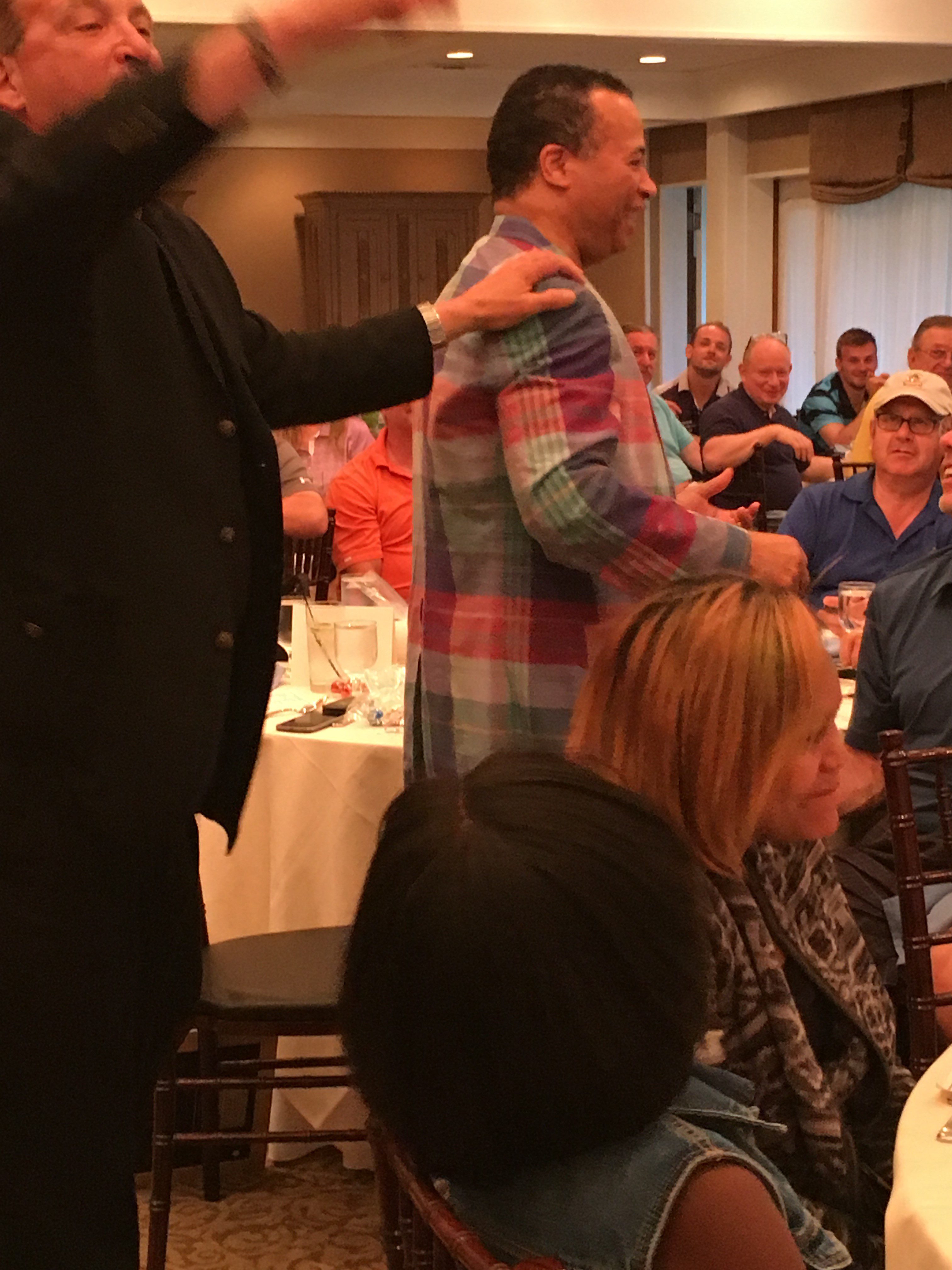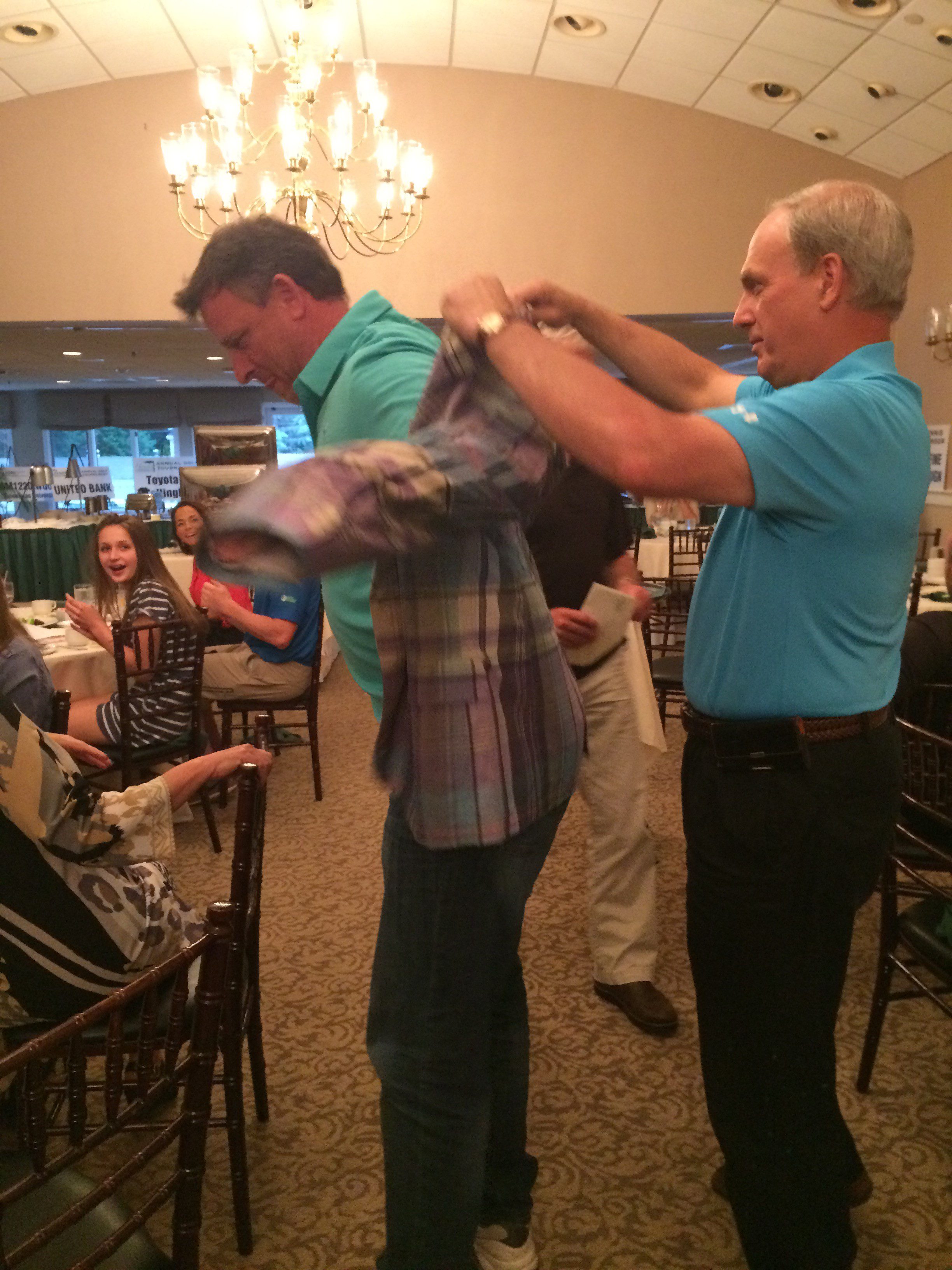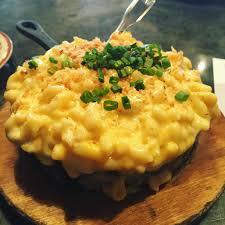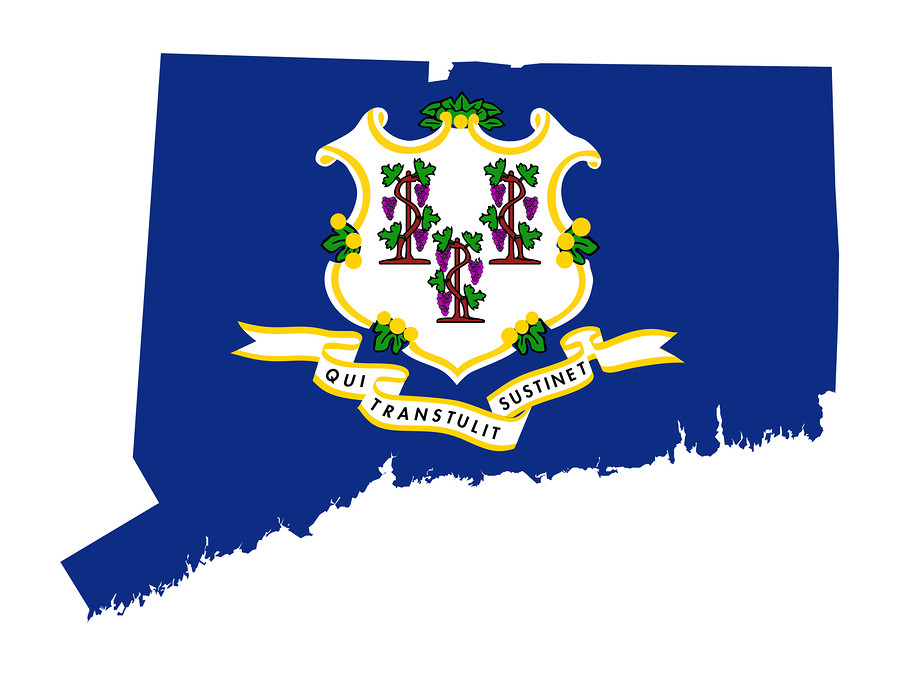
Featured, The Side Bar
It’s April. And that means that baseball season has begun. This year, for the first time since 1968, every team’s season began on the same day, March 29. And that is somewhat odd, too, to open the season on a Friday. It used to be that the Cincinnati Reds always had the first home opening game of the season, though that had more to do with the prospects for good weather. Cincinnati – this may be hard for some of you to understand – used to be one of the southernmost cities in the National League.
“The game begins in the spring,” wrote A. Bartlett Giamatti, “when everything else begins again, and it blossoms in the summer, filling the afternoons and evenings.” That is from Giamatti’s “The Green Fields of the Mind.” Giamatti, some of you might recall, was a Yale professor of English literature, and Yale President for eight years, until he was named president of the National League and then commissioner of baseball. Giamatti says that he first wrote the piece in 1977 for the Yale alumni bulletin; he was secretary of his class, and he submitted it as class notes because “I had absolutely nothing to say about my classmates.” It was rejected, of course, but resurrected when he became Yale president.
“As soon as the chill rains come, it stops, and leaves you to face the fall alone. You count on it, rely on it to buffer the passage of time, to keep the memory of sunshine and high skies alive, and then just when the days are all twilight, when you need it most, it stops.” Giamatti goes on to describe a 1977 Red Sox-Yankees game, though that specific game isn’t the subject. It is the poetry of the game that is his subject.
About the same time that Giamatti wrote his piece, George Carlin had been delivering a masterful stand-up routine, comparing baseball and football. A few lines from that are worth remembering: “Baseball is different from any other sport. In most sports, the ball or object is put in play by the offensive team; in baseball, the defensive team puts the ball in play, and only the defense is allowed to touch the ball….Baseball begins in the spring, the season of new life. Football begins in the fall, when everything is dying….Football is concerned with downs; what down is it? Baseball is concerned with ups; who’s up?….In football, you receive a penalty. In baseball, you make an error.”
Consider how unique the baseball park is: Though the infields are the same throughout, the outfields throughout the game are all quite different. Fenway Park is quirky, a metaphor for the game. In baseball, the foul lines extend forever; a ball that is fair, is fair no matter the distance it travels, and foul is always foul. There is no clock in baseball; 27 outs (at least) are necessary, no matter how long it takes. Ask the 1986 Boston Red Sox about that.
Carlin might have pointed out that baseball is poetry, football is prose. Baseball is independent of some rules, obsessive about others. It is quirky and colorful. Life, in fall and winter, lacks something, and that something is baseball. It’s good to have it back.

Featured, The Side Bar
Ever buy a concert or sporting event ticket online? You’ve neared the end, entered all of your information, credit card and such, and then the website asks you to recognize and write a bit of gibberish, that shows up in a strange box, sometimes with its letters distorted. Well, that’s a CAPTCHA, a Completely Automated Public Turing Test to Tell Computers and Humans Apart. The Turing is named after Alan Turing, often called the father of modern computing, who proposed a test to determine whether or not computers can think, and can mimic humans. Those CAPTCHAs are there to stop a computer program from buying up all the Springsteen tickets. A CAPTCHA is based on the understanding that the human mind is more adept visually than any computer can be. We (humans, that is) try to find patterns where none exist. It’s called pareidolia; that’s why we see the Man in the Moon, or the face of Jesus in a tree stump. It’s why we are so prone to believing in conspiracies; it’s not paranoia (well, not always), but pareidolia. However, computers, at least so far, weren’t as likely to see those patterns. Although I understand that some computer geeks are working on correcting that.
Most of the time, when you’re typing in those characters, there’s nothing else going on; you are simply proving that you are not a computer. But Luis von Ahn, who is credited as one of the inventors of the CAPTCHA, has created a company called reCAPTCHA, that is working to digitize books, using you. The problem with digitizing old books is that, when scanned, the computer cannot always clearly identify the words (proof again that computers aren’t very visual). So, those indecipherable (by the computer) words are thrown to TicketMaster, or whoever. You are buying your Springsteen tickets, and when the box pops up, this time it’s a real word, just blurred. When you type in the word, TicketMaster shares that with reCAPTCHA, which then inserts that corrected word into the text of a book being digitized. Mr. von Ahn says that he wants to make sure that for those five seconds while you’re typing that word, your time is put to good use. Without knowing it, you are multitasking.
The Side Bar by Joseph McDonagh is a monthly blog of random topics on local interests. Joe is a writer posing as an independent insurance agent. His interests include the Red Sox, healthcare, etymology and linguistics, history, and the cultivation of democracy. Contact Joe at josephpmcdonagh@gmail.com

Featured, The Side Bar
Madras. First, the correct pronunciation. Is it MAD-russ, or muh-DRASS? Merriam-Webster says the latter, but dictionary.com says the former. It may depend on whether you are naming the city or the fabric. Even though the fabric got its name from the city. According to gentlemansgazette.com in 1626 the British East India Company (famous for its success in the opium wars in China, and its imperialism everywhere) discovered the Indian village of Madraspatnam, where the locals manufactured a calico cloth “so much desired,” according to Francis Day, an officer of the Company. The original fabric was overprinted or embroidered in elaborate patterns using vegetable dyes. The quality of the water had a significant impact on the colors, so the local weavers had to know which water would produce a certain color. The plaid colors that we currently associate with madras were a later development, the result of a tartan craze started in 1822 when King George IV visited Scotland.
Although madras fabric appeared in the US as early as 1718, as part of a donation made to the Collegiate School of Connecticut by then Madras Governor Elihu Yale (yes, Gov. Yale later lent his name to the Collegiate School), it really started to gain popularity in the 1930s, when Ivy League students would return from vacationing in the Caribbean, wearing their madras purchases (and thereby proclaiming their wealth). One problem, however, was that madras cloth, if not washed properly (in cold water), would bleed. Turning a problem into a marketing gimmick, Brooks Brothers and Seventeen Magazine (no, really) collaborated on an article in 1958, bragging in a photo caption that the material was “guaranteed to bleed.” How to tell if it is true madras? Is the pattern the same on both sides of the cloth? That is the mark of true madras.
For the past three years, at the Hamden Regional Chamber’s Annual Golf Tournament, emcee Ray Andrewsen – Station Manager at WQUN, and owner of a voice so perfect for radio that Gugliemo Marconi must have had Ray in mind when he invented the radio – has auctioned off a beautiful madras jacket, proceeds going to the Make A Wish Foundation. In 2014, I was the proud winner, though of a jacket intended for someone about twice my size. In 2015, Mike Coassin won the jacket, and this year’s winner was Ross Cooper of iHeart Media. Ray seems to have an endless supply of madras jackets, good news for the Chamber, and for Make A Wish.
The Side Bar by Joseph McDonagh is a monthly blog of random topics on local interests. Joe is a writer posing as an independent insurance agent. His interests include the Red Sox, healthcare, etymology and linguistics, history, and the cultivation of democracy. Contact Joe at josephpmcdonagh@gmail.com
Emcee, Ray Andrewsen General Manager & Host of AM 1220 WQUN
Presenting Sponsor Steve Zion, Toyota of Wallingford & 2016 Madra’s Jacket Winner Ross Cooper, iHeart Media.
2015 Madra’s Jacket Winner, Mike Coassin

The Side Bar, Featured
There are, as we all know, four dates in the solar calendar that return, year after year. The two equinoxes – the vernal (spring) and autumnal (fall) equinoxes. And two solstices – the winter and summer solstice. The equinoxes are easily understood: On those dates, we have equal amounts of day and night, 12 hours apiece. The solstices are the shortest and longest days of the year, marking the beginning of winter and summer. Of course, that’s not precisely true, at least insofar as our marking of time is concerned: On the last Saturday in October, when daylight savings time ends, the day is 25 hours long, but that can be dismissed as human meddling.
Solstice comes from the Latin; it literally means “the sun stands still.” On June 21, 2016, the tilt of the earth maximizes the amount of daylight hours we will enjoy. We will have fifteen hours and ten minutes of daylight on that day. That day will be longer in Connecticut than in Washington, DC, which won’t even be fifteen hours long. And Miami’s longest day is only thirteen hours and forty-five minutes. The amount of daylight, of course, depends on one’s latitude; the higher the latitude, the longer the day.
And the longer the sunset. According to The Washington Post, “because the summer solstice features the shortest night of the year, the sun also doesn’t drop as far below the horizon. The sun’s apparent path tends to curve below the horizon instead of dropping quickly, causing longer periods of twilight both before sunrise and after sunset.” Keep that in mind; weather permitting, June 21 is a wonderful evening to find a view of the setting sun, a sight that will last longer than on any other day.
So if that is the longest day of the year, why isn’t it the hottest day? The warmest days of the year generally comeafter the longest day of the year, a month afterwards in fact. In New England, the warmest days come in late July. Part of the reason for that are the oceans; they tend to warm up and cool down more slowly than land, so we continue to warm up even after that longest day.
On noon, on June 21, the sun will be directly above the Tropic of Cancer. On December 22, the winter solstice, it will be directly above the Tropic of Capricorn. Why is it called the Tropic of Cancer? Why did Henry Miller name his two books after those two latitudes? I cannot answer the second question (though it makes me wonder, did you read them?). But, as for the first question: “Tropic” comes from the Greek, trepein, meaning “to turn.” When the sun reaches those two points, it “turns,” it begins to reverse directions. They were first named two millennia ago; then, on June 21, the sun was in the Cancer constellation in the sky, and on December 22, the Capricorn constellation. However, that was true 2,000 years ago, not today. Today, the sun is in Taurus on June 21, and Sagittarius in December. So why are they not the Tropic of Taurus and Tropic of Sagittarius? Great question. Along with the matter of Henry Miller, we’ll save that question for another day.
The Side Bar by Joseph McDonagh is a monthly blog of random topics on local interests. Joe is a writer posing as an independent insurance agent. His interests include the Red Sox, healthcare, etymology and linguistics, history, and the cultivation of democracy. Contact Joe at josephpmcdonagh@gmail.com

Featured, The Side Bar
There might, oddly, be no more American dish than macaroni and cheese. And yet, quite obviously, its origins aren’t American, but Italian. Or French. Okay, European.
Let’s start with the origins of pasta, and the famous story that pasta was introduced to Italy by Marco Polo, who brought it back from China. Well, maybe not. There are references to a kind of pasta, cooked by boiling, in a section of The Talmud written in the Fifth Century AD. Some suggest that during the Arab invasions of Sicily (in the 7th, 8th and 9th centuries) pasta was introduced to Italy. Marco Polo, who returned from China in 1295, had described some Chinese noodles as being like lagana, a Roman word that describes a noodle made from wheat.
The name macaroni comes from a Sicilian term for kneading forcefully, with energy. The making of pasta was typically a daylong effort, with the dough being kneaded with the feet.
The first known recipe for macaroni and cheese dates back to 13th Century Italy. A recipe called “de lasanis” appeared in Liber de Coquina (Book of Cooking), using fermented dough cut into two-inch squares, cooked in water, and tossed with grated cheese. A French cookbook from the 14th century, Forme of Cury, offered a dish called makerouns, which combined (according to food52.com) thin pastry dough, cheese, and butter.
Many suggest that Thomas Jefferson should be credited with bringing macaroni and cheese to America. In 1787, returning from France, Jefferson brought back a pasta machine, which he felt he could improve upon. It appears that he (or his cousin, Mary Randolph, who served as hostess while he was president after his wife died) served macaroni and cheese at a state dinner, while he was president. A guest at the time (according to www.thenibble.com) reports that he was served “a pie called macaroni,” which was probably the baked version. But – and here is where the story gets even more interesting – it is quite likely that the chef who actually created this dish for Jefferson while he lived in Paris was James Hemings, one of Jefferson’s slaves and brother to Sally Hemings, believed by many to have been the mother to a number of Jefferson’s illegitimate children. James Hemings was freed by Jefferson in 1796, but one condition of obtaining his freedom was that James train his brother Robert to replace him as chef in the Jefferson household. It was no doubt Robert who actually prepared the “pie called macaroni” in 1802. Yet it was Mary Randolph who was credited with the recipe; in 1824, Randolph published The Virginia Housewife, which included her (or Heming’s?) recipe for “macaroni and cheese.”
Whatever, we are blessed in the Hamden area with a number of restaurants that offer their own marvelous macaroni and cheese dishes. At the recent 2016 Hamden Regional Chamber of Commerce Expo, Eamonn Ryan’s The Playwright offered his delicious lobster macaroni and cheese (Cellentani pasta and cheddar cheese parmesan cheese sauce). Mickey’s Restaurant offers, on his bar menu, “Mickey’s Macaroni & Cheese,” featuring Swiss, Cheddar, American, and Parmesan cheeses. Eli’s on Whitney has two versions, one with pulled pork, one without. Side Street Grille offers their Steve Jobs Fired Mac & Cheese; and new to Hamden Wood n Tap offers a great Mac n Cheese dish. There are probably many more, so go ahead, indulge a little!
The Side Bar by Joseph McDonagh is a monthly blog of random topics on local interests. Joe is a writer posing as an independent insurance agent. His interests include the Red Sox, healthcare, etymology and linguistics, history, and the cultivation of democracy. Contact Joe at josephpmcdonagh@gmail.com

Featured, The Side Bar
Connecticut’s nickname — well, one of them — is “The Nutmeg State.” Why? We are certainly not a state that grows nutmeg. Well, it goes back to Connecticut’s commercial and shipping interests. Ships laden with spices from Asia, South America, Africa, all came to Connecticut first.
Nutmeg comes from a tropical evergreen tree (which sounds like an oxymoron to me). The trees grow in the Spice Islands, in Indonesia, and can grow to over 60 feet. The fruit of the tree, according to the Encyclopaedia Brittanica, is a “pendulous drupe.” The fruit itself is eaten by the locals; inside the fruit is a crimson-colored aril, surrounding the seed itself. The aril is called mace, and it too is a spice.
A nutmeg tree can produce fruit three times a season. The nutmeg seed is dried, over a two-month period, and then broken open to reveal the mace and the nutmeg. The mace is peeled off from the nutmeg kernel, “flattened into strips, dried, and sold either as whole (blades) or finely ground powder” (this from nutrition-and-you.com). The nutmeg kernel itself is also dried, for weeks, until the whole nutmeg can be heard rattling inside the kernel. When the shell is finally cut open, the shriveled nutmeg kernel is dipped in lime juice, to prevent it from seeding and to protect it from insects. The final product resembles wood. In fact, there were rumors that Connecticut merchants would put nutmegs in the top and bottom of a barrel, filling the rest with fake wooden replicas. And it’s just as likely that the customers — southerners, in this report from mentalfloss.com — didn’t understand that to eat a nutmeg, it must first be grated.
It was over nutmeg (well, other spices as well, but nutmeg was the most prominent one) that the Dutch and English fought for many, many years. Those two European powers were international competitors, particularly in pursuit of spices of all kinds. Finally in 1667, a treaty was signed, the Treaty of Breda. The Dutch got back various spice-producing colonies in the East Indies (including the final nutmeg-producing colony in the British Empire), and the British – among other things – got New Netherlands. You know it by its current name, New York. And yes, the Dutch thought they got the better end of the deal.
So what is the big deal? Well, the Chinese and Indians knew that nutmeg could help with digestion, and have a calming influence on the brain. And it turns out, nutmeg has some psychoactive elements within it, similar to mescaline or ecstasy. Doubt it? Read “My Nutmeg Bender” by Wayne Curtis in The Atlantic from a few years ago. Mr. Curtis quotes from A Dictionary of Hallucinations (if you are interested, amazon.com says they have one copy available) that nutmeg is “reported to mediate visual, auditory, tactile, and kinaesthetic hallucinations (notably the sensation of floating).” Curtis reports that Malcolm X, in The Autobiography of Malcolm X, said that “a penny matchbox full of nutmeg had the kick of three or four reefers.” But Curtis’ own experience with nutmeg – he swallowed a few teaspoons of freshly grated nutmeg, washing it down with water – wasn’t quite so pleasant. Though he did say that he found the shingles on his neighbor’s house suddenly quite amusing.
Oh, right, Connecticut. Certainly “The Nutmeg State” should now seem a more attractive nickname than “The Land of Steady Habits,” a nickname we earned (according to connecticuthistory.com) in the early nineteenth century from our propensity to “repeatedly [elect] the same officials to high office.” And then there’s “The Constitution State,” a title that was officially endorsed by the Connecticut General Assembly in 1959. That one is based on the notion that the United States Constitution was inspired, in part, by the Fundamental Orders of Connecticut, signed on January 14, 1639. The Fundamental Orders were adopted by the communities of Hartford, Windsor, and Wethersfield, establishing a representative government. You can find the Fundamental Orders online, and there are fascinating aspects to them. They establish the process for electing two “generall assemblies or courts,” and a “gouerner.” The oath of office for said gouerner is something we might consider re-adopting: “I, being chosen to be gouernor within this jurisdiction…doe swear by the greate and dreadfull name of the everliuing God, to promote the publicke good and peace of same….”



